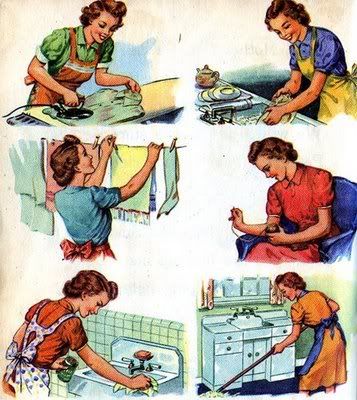I came to the concept of bulk buying over a period of about 2 years. Shopping once a week was a finely tuned, very dragged out endeavour that I hated with a passion. We live in a rural area and I had to factor in travelling, both time and cost, plus naptime for my then 1yo and my energy levels (living with PND is a real drag ;)) and most often they didn't jive. Having our income slashed during the economic slump leaving us approximately $30 to spend on food and diesel was the last straw and I very quickly decided fortnightly shopping was the way to go. As my 'stretch'em' skills developed and I found more ways to DIM (do it myself!) I realised we were going 3-4 weeks without needing to shop! Possibly not exciting for the rest of the planet but for me it was a great relief and I embraced the change gladly!!
Now time went on, our income went back up, we suffered through my second pregnancy and the birth of our second gorgeous son (not one of those peaceful glowing mamas-to-be!!! My pjs were my best friend, second only to mouthwash after my rather hideous and continual bouts of morning sickness and don't even get me started on how much I hated the kitchen...), then it was time to do another shop. To my utter shock and horror two children actually doubled the time it took me to get everything done!!! I don't know why I was surprised - but I was! Even once a month was too much and so I began to consider bulk buying and we get to the point of this post...
Points to consider when contemplating the fine art of buying in bulk:
- What products do I use the most?
- What products can I not afford to run out of (i.e toilet paper!)?
- What products that I use can be stored longterm and what has a short shelf life?
- Wheres my recipe book?
- What can I make myself (i.e tortillas, tomato sauce)?
Here is the rundown of what I did to prepare for my first 6 month bulk buy:
- I pulled out all my recipe books and listed all our favourite dinner, baking, condiments and desserts recipes (very important!).
- I multiplied each dinner/dessert and condiment recipe by 24, and each baking recipe by 48. I based my multiplication on the assumption that I'd make each dinner/dessert and condiment recipe once a week and each baking recipe twice a week. I have about 20 dinner recipes, 3 dessert recipes and only make up condiments as we use them so I obviously wasn't working to a specific 6 month menu plan!! I wanted to make sure I had more than enough in case we felt like a particular meal more often than another or we had dinner guests. The idea here is to OVER-shop!
- I broke down every single ingredient in every single recipe (based on my multiplied figures and no its not as hard as you'd think) and listed it like for like, so all tomato servings from all recipes are added up together KWIM? I may need 20 x 800g tins of tomatoes to make all the recipes requiring tomato over the 6 months. Hmmm hope thats clear enough!
- Just slotting in here that I also worked out how much I could actually make from scratch so my enchiladas require tortillas and enchilada sauce both of which I make myself. I broke down those ingredients and added them to my list.
- I listed all the ingredients required for my cleaners, hair and body products.
- I then worked out the approximate shelf life of everything on my list and sectioned all the items under headings such as dairy, tins, bags, and so on. Its important to have an idea of whats required to store your bulk food items safely and securely.
- Finally I began to price check!!
When checking prices of the products on your ingredients list you'll come across different sizes available. You'll also have a range of providers available to you. Heres some ideas on how to price check in your area and some things I did, beginning with how to price and following on to where to look.
- Always take the unit price of each brand/size you're pricing. This is very important so you have the most accurate figures to work with.
- Make sure you check if GST is included in the price. Bulk providers don't include it so you need to add it on in order to get the most accurate price. To find GST I use this calculation : 'price not inc GST' x 0.125 = GST. If you have a different way of doing this please share :) Remember GST is going up in October so the calculation will need to be adjusted to reflect that.
- Don't take down sale prices unless you plan on shopping within the sale timeframe.
- Make sure you note which shop you got each price from. The more organised you can be the easier it is. I have a price list you can print off however I'm having abit of trouble converting it to PDF so I'll sort that out tomorrow - watch this space :)
- Make a list of all your local suppliers first and price them out.
- Google your area for more supplier options. Christchurch for example has a couple of bulk suppliers that aren't available to the rest of the country.










3 comments:
OMG this post is a massive effort, thank you so much! Gosh it sounds like alot of hard work to begin with but I am sure it pays off. I have already started an ingredients list for my baking to calculate quantities(I love Excel!!) so that will help. Think I will rope DH in to help as well. Again thanks so much for this!!
Just with the GST....if you times the GST exclusive prive by 1.125, you will get the GST inclusive price, instead of having to calculate the GST and then add it on :)
Kate you are a LEGEND!!! I hate all the calculations I end up doing so this is going to help bigtime :)
Thanks babe xx
Post a Comment